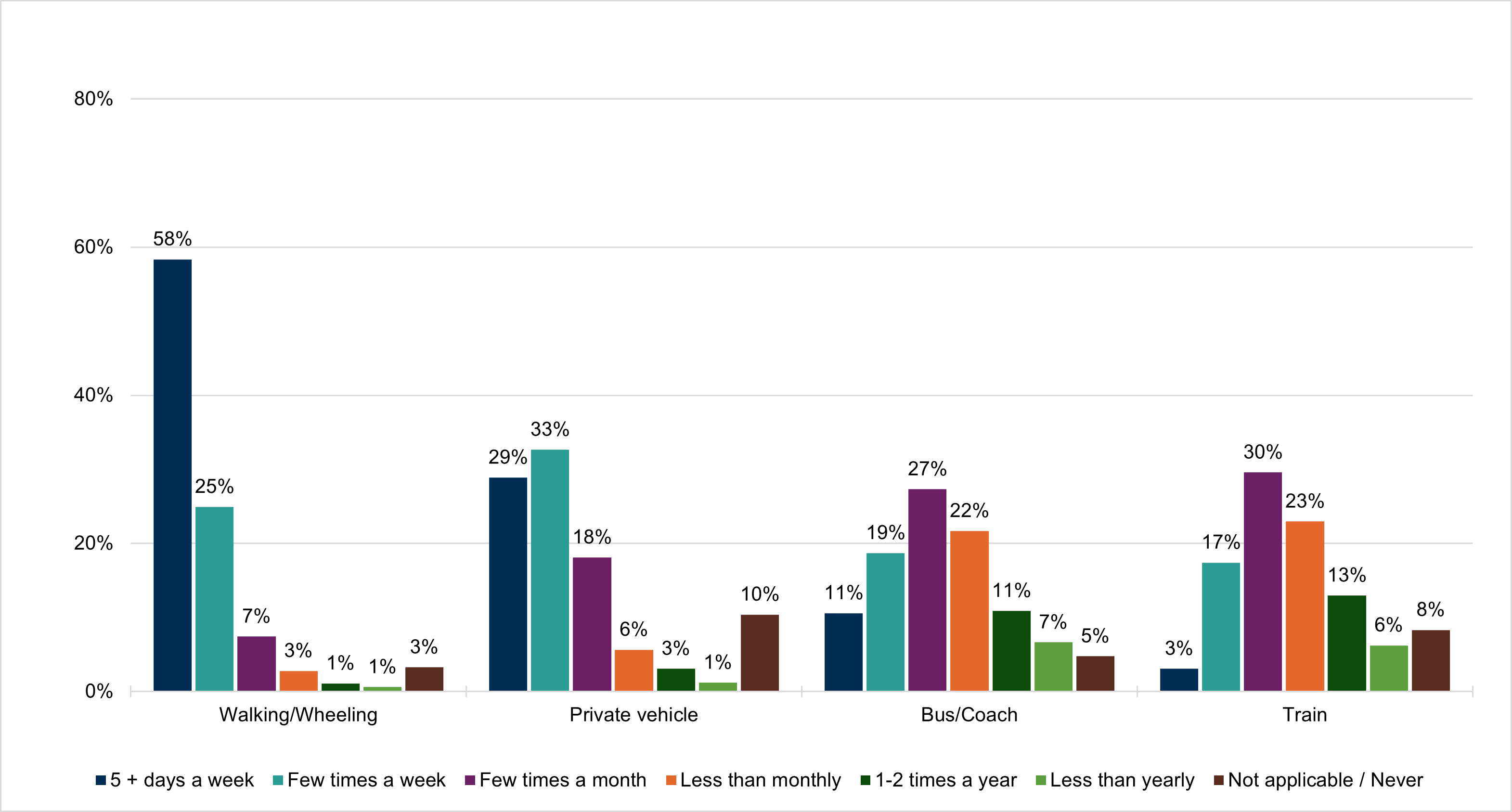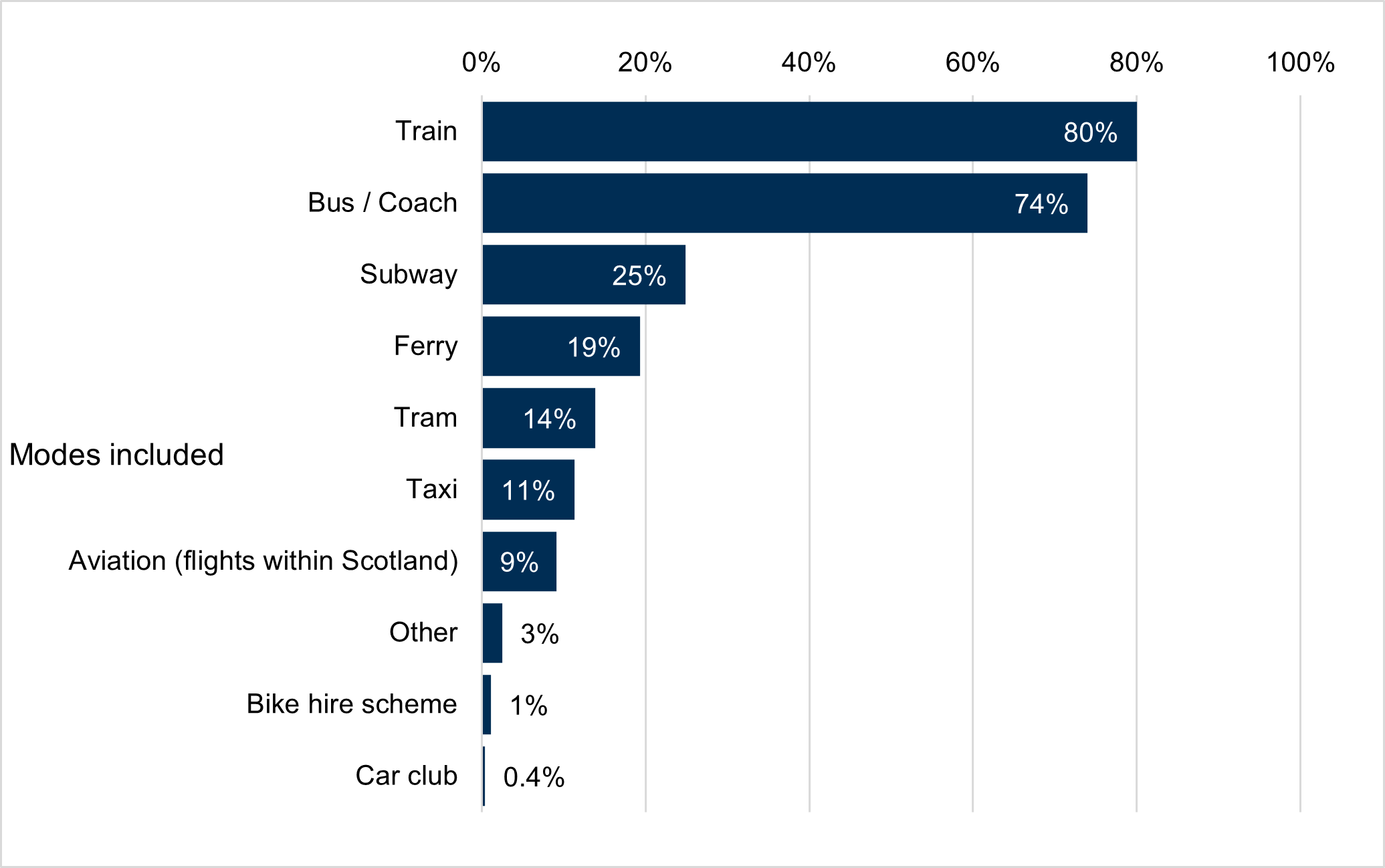Transport use
Modes and frequency of use
Chart 9 shows how frequently respondents used the most popular modes of transport in the past 12 months. (For further information on lesser used modes see Annex Table 6.)
The most common way to travel was by walking or wheeling. 83% travelled this way at least a few times a week.
The proportion of people undertaking active travel at least a few times a week was 97%. The next most popular mode of transport was private vehicle, including cars, vans, motorcycles and mopeds. These were used by 62% of respondents at least a few times a week. 62% travelled by some mode of public transport at least a few times a week: the most frequently used public transport mode was bus or coach, with 29% of all respondents traveling this way at least a few times a week.

The legend is presented in the same order as the bars in the clusters.
Multi-modal and multi-operator journeys
Multi-modal journeys were defined in the survey as those made using multiple types of public transport. Multi-operator journeys were defined as journeys using “the same mode, but different operators.”
Of those who had used public transport in Scotland in the year before the survey, 79% had made a multi-modal journey. The majority of these journeys included train (80%) and bus or coach (74%).
Chart 10 shows the frequency with which different modes were part of a multi modal journey. The majority of respondents who made multi-modal journeys travelled by train (80%) and bus/coach (74%).

The data are also available in Annex Table 7.
Evidence from around the world shows that women are more likely than men to trip chain (making several small, interconnected trips) , rather than making a single trip from home to their ultimate destination (e.g. National Travel Survey - Trip Chaining, Women's Safety and Security: A Public Transport Priority). However, 80% of male respondents had made a multi-modal journey in the year before the survey, compared with 78% of women. Men and women were equally likely to have made a multi-modal journey including buses, with 74% of each traveling this way. Women were more likely than men to have made multi-modal journeys including trams (15% of women to 13% of men), flights (11% of women to 7% of men) and taxis (16% of women to 7% of men).
56% of respondents had made multi-operator journeys. Of these the majority had travelled by train (46%) or bus (45%).
A small proportion of respondents (4%) had made a ferry-to-ferry multi-operator journey.
As with multi-modal journeys, men were more likely than women to have made a multi-operator journey: 61% of men had done so, compared with 49% of women.